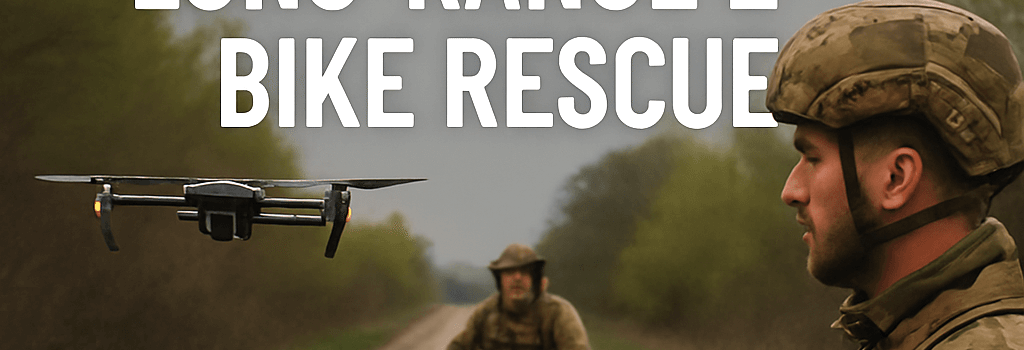Ukrainian Forces Use Drone for Long-Range E-Bike Rescue

In a stark demonstration of how drone logistics are transforming modern warfare, Ukraine’s 4th Rapid Reaction Brigade (“Rubizh”) recently deployed a custom heavy-lift quadcopter to deliver a complete electric bicycle (e-bike) to a cut-off soldier. This operation underscores both the ingenuity and the technical evolution of unmanned aerial vehicles (UAVs) on the frontline.
Drone Innovations on the Frontline
Since the onset of the Russian invasion, both sides have accelerated drone R&D, yielding:
- Fiber-optic tethered drones to evade RF jamming
- Kamikaze sea drones armed with anti-ship missiles
- Grenade- and mine-dropping bomber UAVs
- Thermite-releasing trench breachers
- High-speed FPV quads capable of indoor penetration
- Interceptor drones hunting enemy UAV swarms
- Long-range MALE-style drones doubling as tactical cruise missiles
- Autonomous AI targeting modules for degraded comms environments
The Rubizh Brigade’s E-Bike Delivery Mission
According to front-line footage published on the brigade’s official YouTube channel, a soldier with the callsign “Tankist” found himself isolated after his unit suffered casualties under heavy shelling. With no ground route available, brigade planners devised a three-attempt drone drop:
- First quadcopter (payload 20 kg) was shot down by MANPADS.
- Second UAV failed mid-flight due to motor overheating under a 35 kg load.
- Third flight succeeded, delivering a 28 kg e-bike, enabling Tankist to return towards friendly lines.
During his return, Tankist also struck a mine; after a field repair, he resumed mobility using a second delivered e-bike.
Technical Specifications of the Heavy-Lift Quadcopter
- Wingspan: 3.2 m
- Maximum Takeoff Weight: 75 kg
- Payload Capacity: 30 kg
- Flight Time: 25 minutes (6 000 mAh Li-Po battery)
- Propulsion: Four 1200 W brushless motors, 24×12″ carbon-fiber propellers
- Navigation: Dual-band GPS + RTK module, inertial measurement unit (IMU), backup optical flow
- Comms: 10 km encrypted link with fallback Starlink-like mesh network
Operational Challenges and Countermeasures
Deploying heavy-lift drones in a contested airspace introduces multiple hurdles:
- Electronic Warfare (EW): Jamming and spoofing can degrade GPS. Countermeasure: inertial backups and fiber-optic control tethers in high-threat zones.
- Thermal Signature: Large power draw generates heat. Countermeasure: low-emissivity coatings and heat sinks integrated into the frame.
- Air Defense: MANPADS threaten slow-moving UAVs. Countermeasure: high-cruise‐speed flight corridors and decoy flares.
“Integrating RTK navigation and optical flow gives these drones sub-meter precision even when GPS is compromised,” says Dr. Olena Kovalchuk, UAV systems lead at Ukraine’s Sikorsky Challenge accelerator.
Strategic Implications of Payload Drone Logistics
This e-bike delivery marks a shift from resupply by foot or armored convoy to rapid aerial logistics. Key advantages include:
- Reduced Exposure: Minimizes troop and vehicle vulnerability on supply lines.
- Rapid Response: Cuts delivery time from hours to minutes over 5–10 km ranges.
- Scalability: Future swarm tactics could mutually support payload drops and overwatch.
Future Outlook: Autonomous Heavy-Lift Drone Logistics
Looking ahead, integration of on-board AI will enable:
- Autonomous route replanning around no-fly zones and active air defenses.
- Machine vision for pinpoint drop accuracy in dense terrain.
- Collaborative UAV swarms sharing telemetry via edge-deployed 5G nodes.
Meanwhile, commercial players such as Wingcopter and Zipline have begun flight trials of 70 kg payload drones for disaster relief. The Ukrainian battlefield application underscores dual-use potential that will likely accelerate regulatory approvals and technology transfer.